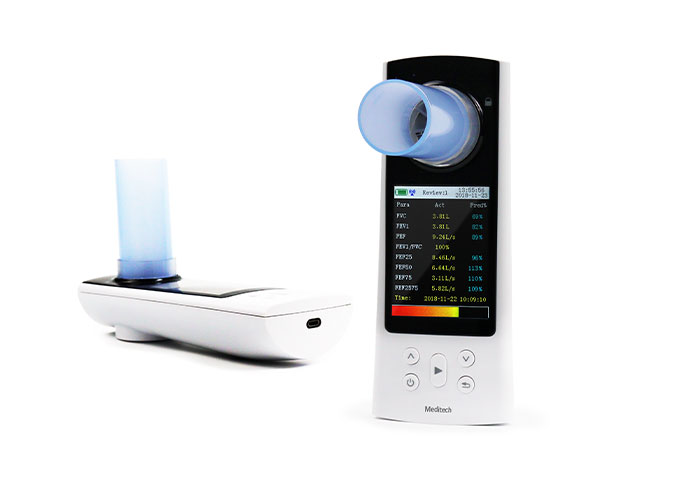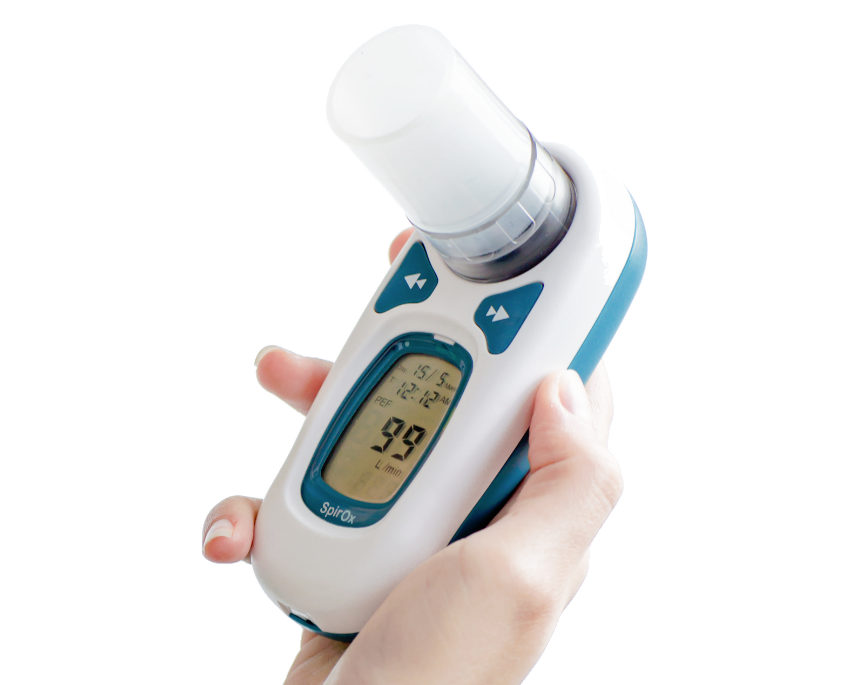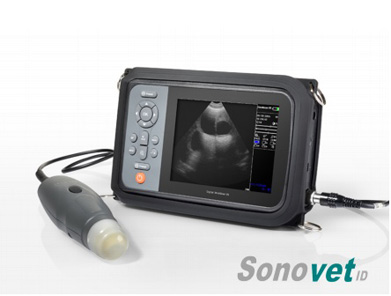Phased Array transducer has a small footprint and low frequency (its central frequency is 2Mhz – 7.5Mhz).
The beam point is narrow but it expands depending on the applied frequency. Furthermore, the beam shape is almost triangular and the near-field resolution is poor.
image of phased array probe
Almost Triangular Beam Shape
What for can you use the Phased Array transducer?
Cardiac examinations, including Transesophagealexaminations
Abdominal examinations
Brain examinations
Other Ultrasound Transducer Types
We are not done, yet.
There are more ultrasound transducer types on the market. Such as:
Pencil transducers, also called CW Doppler probes, are utilized to measure blood flow and speed of sound in blood. This probe has a small footprint and uses low frequency (typically 2Mhz– 8Mhz).
The next ultrasound transducer type is endocavitary. These probes provide you with the opportunity to perform internal examinations of the patient. Therefore, they are designed to fit in specific body orifices. The endocavitary transducers include endovaginal, endorectal, and endocavity transducers. Typically, they have small footprints and the frequency varies in the range of 3.5Mhz – 11.5Mhz.
Furthermore, there is a transesophageal (TEE) probe. As well as the previously mentioned probes, it has a small footprint and is used for internal examinations. It is often employed in cardiology to obtain a better image of the heart through the oesophagus. The frequency is middle, in the range of 3Mhz – 10Mhz.
Moreover, there are several probes designed for surgical use, for instance – laparoscopic probes.
Endocavity transducer
Endocavity transducer
Pencil transducer
Pencil transducer
Tips You Should Follow When Buying an Ultrasound Transducer
Now, you should be aware of the most common ultrasound transducer types. And we have a few tips that you should follow when purchasing ultrasound transducers:
Make sure to double check that the probe you are about to buy is compatible with the system you own – you can use a probe guide, or ask our sales team.
Penetration depth is better at a low frequency (between 2.5 and 7.5Mhz) but a disadvantage of the low frequency is a lower image quality
The higher the frequency (above 7.5Mhz), the lower is the depth of penetration, however, you get better quality images close to the surface (7.5MHz = 20 cm).
Be cautious!
A black line on the screen of the ultrasound system will most likely mean that the transducer has a dead crystal inside.
A shadow on the screen of the ultrasound system could indicate a weak crystal inside the transducer that does not produce the necessary vibration.
How Should You Treat Your Transducer?
Finally, remember that the transducer is a very important, and also a very expensive element of an ultrasound. Therefore, after you have purchased your transducer, you should use it with caution, which means:
Do not throw, drop, or knock the transducer
Be careful not to damage the duct of the transducer
Wipe the gel from the transducer after each use
Do not sluice with alcohol-based confections

















